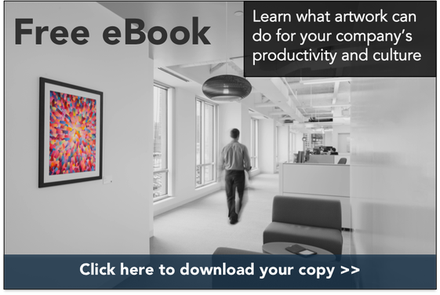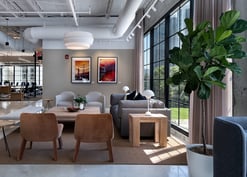 These days, companies that are either opening new offices or moving to new locations are increasingly opting for versatile, flexible workspaces. Take Red Bull’s new New York City office for an example. Despite having an exceptionally strong and recognizable brand, Red Bull chose to keep their space muted. Claiming to be “immune to workplace fads,” the company designed multiple spaces that can be repurposed at anytime at little to no cost. This will be especially important as the office grows.
These days, companies that are either opening new offices or moving to new locations are increasingly opting for versatile, flexible workspaces. Take Red Bull’s new New York City office for an example. Despite having an exceptionally strong and recognizable brand, Red Bull chose to keep their space muted. Claiming to be “immune to workplace fads,” the company designed multiple spaces that can be repurposed at anytime at little to no cost. This will be especially important as the office grows.
Building this type of office makes a lot of sense in the modern work world, especially given the entry of millennials into the workplace, who tend to be motivated differently than previous generations (read more about that here). Not to mention that office turnover in the U.S. has hit roughly 20% and only seems to be increasing. While other companies may need to move to accommodate changes in their office size and attitude, Red Bull has found a way to keep one space and mold it over time.
Taking a cue from Red Bull, we have a few tips to ensure that your office can stand the test of time, and roll with the changes that it’ll inevitably face.
Keep branding to a minimum
This may sound a little silly. After all, you want to boast the beautiful brand you’ve built to your employees and visitors right? Not necessarily. Companies are modifying their brand more frequently these days as new forms of advertising and marketing continue to emerge through online and social channels. The logo you emblazon over your front desk this month might not be the same logo you’re using next year. Brand consistency is important, but can become a headache if you have to refit your heavily branded office every time you tweak your logo or color scheme.
Its also important to think about who spends a majority of their time in your space. Your employees. They don’t necessarily need to see your company’s branding every day to be motivated by it. Instead, they’d likely prefer a more comfortable space that is optimized for the way they’d like to work. Instead of promoting the company’s culture through branding, it can be more valuable to create spaces that are comfortable and welcoming. Proper decorations, artwork, lighting and color schemes can help do this more than a logo or reflections of past marketing campaigns.
Avoid permanent fixtures
If you’re looking to keep your space as flexible as possible, consider future uses for different areas of the office. For example, a growing company may have an open bullpen in one area of the office, but as they expand they may need more space and the existing bullpen may become a large conference area or training room. If desks are bound to walls or large murals are purchased that will not fit in another space, a costly renovation could be in order.
Take a look at what Google has done with their “Garage.” It may be a little over the top, but this particular space shows some great ideas to improve the flexibility of an office space.
Rent artwork
It’s been shown without a doubt that artwork in the workplace has significant benefits in terms of improving employee productivity, employee happiness and building company culture, but it doesn’t need to be a permanent investment. After all, even if your office isn’t changing constantly, artwork can still get stale over time. Renting artwork allows companies to rotate new artwork into their office when they feel the time is right.
This added flexibility also accounts for changes within the office. We’ve talked before about how certain types of art compliments spaces designed for certain activities, such as focus, collaboration, client engagement, or interviews. As spaces get re-purposed, artwork should reflect their new use.
Hopefully these tips are helpful. We’re constantly thinking of ways to improve work environments across the country, so let us know if you need our help! Also – if you’re interested in learning more about the powerful effect art can have on your company, check out our eBook below:

.jpg?width=332&height=177&name=_MG_0840%20copy%20(2).jpg)

.jpg?width=332&height=177&name=dtBv_067_DSC_2139_DaNil%20(2).jpg)



